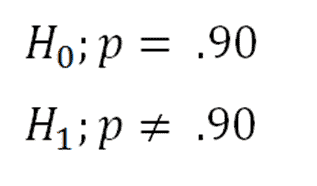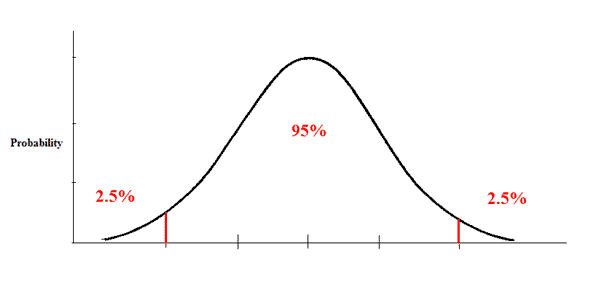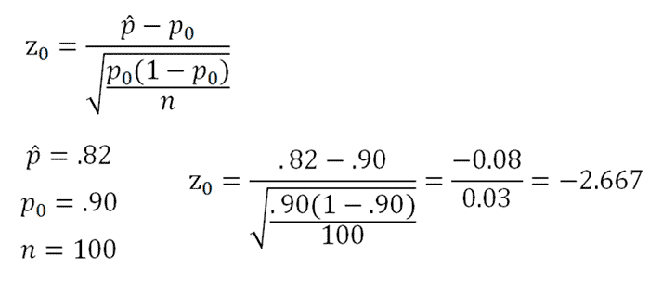Let's perform a one sample z-test for proportions: A survey claims that 9 out of 10 doctors recommend aspirin for their patients with headaches. To test this claim, a random sample of 100 doctors is obtained. Of these 100 doctors, 82 indicate that they recommend aspirin. Is this claim accurate? Use alpha = 0.05
| Steps for One-Sample z-Test for Proportions |
|---|
|
1. Define Null and Alternative Hypotheses 2. State Alpha 3. State Decision Rule 4. Calculate Test Statistic 5. State Results 6. State Conclusion |
Let's begin.
1. Define Null and Alternative Hypotheses

|
Figure 1. |
|---|
2. State Alpha
Alpha = 0.05
3. State Decision Rule
Using an alpha of 0.05 with a two-tailed test, we would expect our distribution to look something like this:

|
Figure 2. |
|---|
Here we have 0.025 in each tail. Looking up 1 - 0.025 in our z-table, we find a critical value of 1.96. Thus, our decision rule for this two-tailed test is:
If Z is less than -1.96, or greater than 1.96, reject the null hypothesis.
4. Calculate Test Statistic

|
Figure 3. |
|---|
5. State Results
z = -2.667
Result: Reject the null hypothesis.
6. State Conclusion
The claim that 9 out of 10 doctors recommend aspirin for their patients is not accurate, z = -2.667, p < 0.05.